How Modern Buildings Put Birds In Danger

"Chicago’s 82-story Aqua Tower appears to flutter with the wind. Its unusual, undulating facade has made it one of the most unique features of Chicago’s skyline, distinct from the many right-angled glass towers that surround it.
In designing it, the architect Jeanne Gang thought not only about how humans would see it, dancing against the sky, but also how it would look to the birds who fly past. The irregularity of the building’s face allows birds to see it more clearly and avoid fatal collisions. “It’s kind of designed to work for both humans and birds,” she said.
As many as 1 billion birds in the US die in building collisions each year. And Chicago, which sits along the Mississippi Flyway, one of the four major north-south migration routes, is among the riskiest places for birds. This year, at least 1,000 birds died in one day from colliding with a single glass-covered building. In New York, which lies along the Atlantic Flyway, hundreds of species traverse the skyline and tens of thousands die each year.
As awareness grows of the dangers posed by glistening towers and bright lights, architects are starting to reimagine city skylines to design buildings that are both aesthetically daring and bird-safe.

Pictured: Chicago's Aqua Tower was designed with birds in mind.
Some are experimenting with new types of patterned or coated glass that birds can see. Others are rethinking glass towers entirely, experimenting with exteriors that use wood, concrete or steel rods. Blurring lines between the indoors and outdoors, some architects are creating green roofs and facades, inviting birds to nest within the building.
“Many people think about bird-friendly design as yet another limitation on buildings, yet another requirement,” said Dan Piselli, director of sustainability at the New York-based architecture firm FXCollaborative. “But there are so many design-forward buildings that perfectly exemplify that this doesn’t have to limit your design, your freedom.”
How modern buildings put birds in danger
For Deborah Laurel, principal in the firm Prendergast Laurel Architects, the realization came a couple of decades ago. She was up for an award for her firm’s renovation of the Staten Island Children’s Museum when the museum’s director mentioned to her that a number of birds had been crashing into the new addition. “I was horrified,” she said.
She embarked on a frenzy of research to learn more about bird collisions. After several years of investigation, she found there was little in the way of practical tips for architects, and she teamed up with the conservation group NYC Audubon, to develop a bird-safe building guide.
The issue, she discovered, was that technological and architectural advancements over the last half-century had in some ways transformed New York City – and most other US skylines and suburbs – into death traps for birds...
At certain times of day, tall glass towers almost blend into the sky. At other times, windows appear so pristinely clear that they are imperceptible to birds, who might try to fly though them. During the day, trees and greenery reflected on shiny building facades can trick birds, whereas at night, brightly lit buildings can confuse and bewilder them...

Pictured: A green roof on the Javits Convention Center serves as a sanctuary for birds.
The changes that could save avian lives
About a decade ago, Piselli’s firm worked on a half-billion-dollar renovation of New York’s Jacob K Javits Convention Center, a gleaming glass-clad space frame structure that was killing 4,000-5,000 birds a year. “The building was this black Death Star in the urban landscape,” Piselli said.
To make it more bird friendly, FXCollaborative (which was then called FXFowle) reduced the amount of glass and replaced the rest of it with fritted glass, which has a ceramic pattern baked into it. Tiny, textured dots on the glass are barely perceptible to people – but birds can see them. The fritted glass can also help reduce heat from the sun, keeping the building cooler and lowering air conditioning costs. “This became kind of the poster child for bird-friendly design in the last decade,” Piselli said.
The renovation also included a green roof, monitored by the NYC Audubon. The roof now serves as a sanctuary for several species of birds, including a colony of herring gulls. Living roofs have since become popular in New York and other major cities, in an inversion of the decades-long practice of fortifying buildings with anti-bird spikes. In the Netherlands, the facade of the World Wildlife Fund headquarters, a futuristic structure that looks like an undulating blob of mercury, contains nest boxes and spaces for birds and bats to live.
The use of fritted glass has also become more common as a way to save the birds and energy.
Earlier this year, Azadeh Omidfar Sawyer, an assistant professor in building technology in the Carnegie Mellon School of Architecture, working with student researchers, used open-source software to help designers create bespoke, bird-friendly glass patterns. A book of 50 patterns that Sawyer published recently includes intricate geometric lattices and abstract arrays of lines and blobs. “Any architect can pick up this book and choose a pattern they like, or they can customize it,” she said.

Pictured: The fritted glass used in Studio Gang’s expansion of Kresge College at the University of California, Santa Cruz, depicts the animals in the local ecosystem.
Builders have also been experimenting with UV-printed patterns, which are invisible to humans but perceptible to most birds. At night, conservationists and architects are encouraging buildings turn off lights, especially during migration season, when the bright glow of a city skyline can disorient birds.
And architects are increasingly integrating screens or grates that provide shade as well as visibility for birds. The 52-floor New York Times building, for example, uses fritted glass clad with ceramic rods. The spacing between the rods increases toward the top of the building, to give the impression that the building is dissolving into the sky.
Gang’s work has incorporated structures that can also serve as blinds for birders, or perches from which to observe nature. A theater she designed in Glencoe, Illinois, for example, is surrounded by a walking path made of a wood lattice, where visitors can feel like they’re up in the canopy of trees.

Pictured: The Writers Theatre, designed by Studio Gang, includes a walking path encased in wood lattice.
Rejecting the idea of the iridescent, entirely mirrored-glass building, “where you can’t tell the difference between the habitat and the sky”, Gang aims for the opposite. “I always tried to make the buildings more visible with light and shadow and geometry, to have more of a solid presence,” she said.
Gang has been experimenting with adding bird feeders around her own home in an effort to reduce collisions with windows, and she encourages other homeowners to do the same.
“I’ve found that birds slow down and stop at feeders instead of trying to fly through the glass,” she said.
While high-rise buildings and massive urban projects receive the most attention, homes and low-rise buildings account for most bird collision deaths. “The huge challenge is that glass is everywhere.” said Christine Sheppard, who directs the glass collisions program at the American Bird Conservancy (ABC). “It’s hard to know what I know and not cringe when I look at it.”
Tips for improving your own home include using stained glass or patterned decals that can help birds see a window, she said. ABC has compiled a list of window treatments and materials, ranked by how bird-safe they are.
Whether they’re large or small, the challenge of designing buildings that are safe for birds can be “liberating”, said Gang, who has become an avid birdwatcher and now carries a pair of binoculars on her morning jogs. “It gives you another dimension to try to imagine.”"
-via The Guardian, December 27, 2023
More Posts from Neptuneblueeee and Others
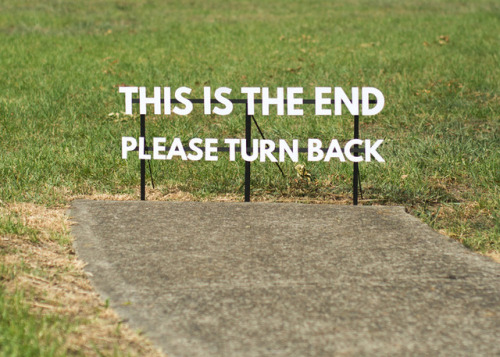
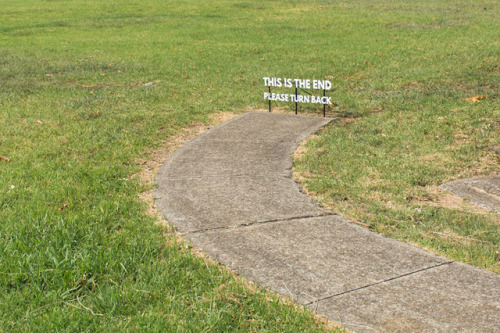
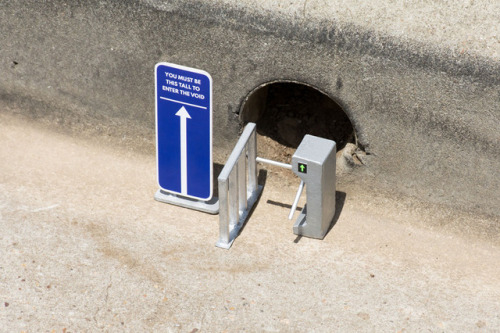

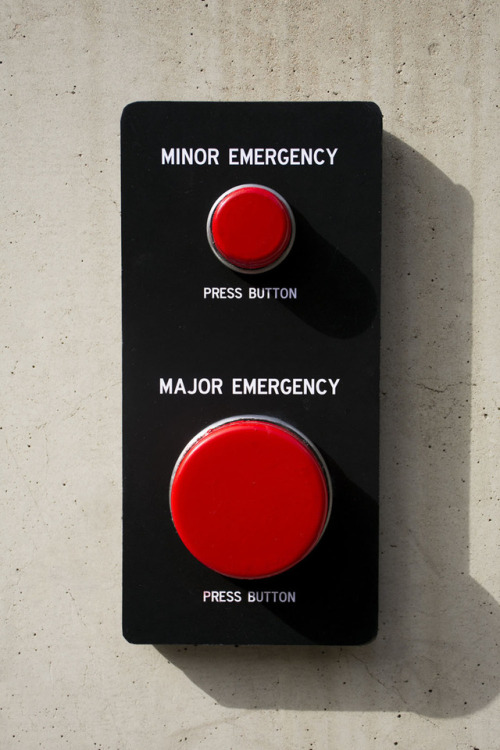
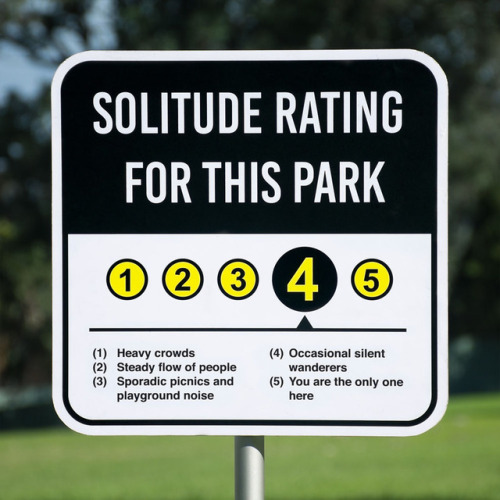
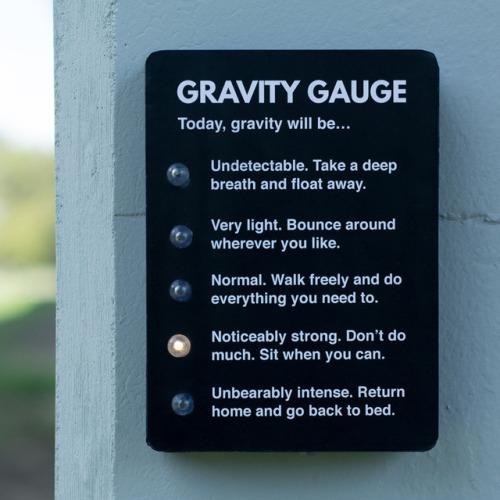
In Sydney you’ll find these fun urban interventions by artist Michael Pederson. (Source) For bizarre world posts: https://sixpenceee.com/tagged/world

Frozen methane bubbles under the ice of Vermillion Lake, in Banff National Park in Alberta, Canada
we all have a brickaday within us
Small town culture is knowing that there are Old Folks with strange nicknames but never knowing the stories behind them.
Of course, I made the mistake of asking why everyone calls this one guy Brickaday and it turns out that he worked at a brickyard for 40 years, stealing exactly one brick every day and making no particular efforts to conceal the theft. Nobody thought anything of it until years later he was discovered to have built three houses.
His boss is said to have shrugged and made some remarks about the importance of coming up with a plan and sticking to it.
I‘m trying to arrange my face into an appropriate approximation of silent bafflement and failing miserably.

Signs of a heart attack are different for each gender yet we only really teach the male warning signs. Make sure you’re aware of both and spread it to as many other women as possible!

powerful and threatening, queen of the boxes




I love this song.

The Decatur Daily Review, Illinois, April 8, 1947
It’s sometimes really annoying getting ads like these because they legitimately look like standalone shitposts. I double tap them and then I’m suddenly taken to some malware candy-crush gamesite with very little shitposts to show for it




Laotian Bearded Snake (Parafimbrios lao), family Xenodermatidae, northern Thailand
Named for the ridged labial scales, which to some people look more like a mustache than a beard.
Rarely encountered.
First described in 2015.
photographs by Rupert GL
-
 ling-dada liked this · 2 months ago
ling-dada liked this · 2 months ago -
 ahni-animalia reblogged this · 3 months ago
ahni-animalia reblogged this · 3 months ago -
 blackpointgame liked this · 4 months ago
blackpointgame liked this · 4 months ago -
 shenanigans-and-daydreaming liked this · 4 months ago
shenanigans-and-daydreaming liked this · 4 months ago -
 yung-and-bludy reblogged this · 4 months ago
yung-and-bludy reblogged this · 4 months ago -
 cptappleobservation liked this · 6 months ago
cptappleobservation liked this · 6 months ago -
 glass-rocks reblogged this · 7 months ago
glass-rocks reblogged this · 7 months ago -
 glass-rocks liked this · 7 months ago
glass-rocks liked this · 7 months ago -
 nintendocrowbro reblogged this · 7 months ago
nintendocrowbro reblogged this · 7 months ago -
 enchantedblackforest reblogged this · 7 months ago
enchantedblackforest reblogged this · 7 months ago -
 gettothedancing reblogged this · 7 months ago
gettothedancing reblogged this · 7 months ago -
 wife-beater77 liked this · 7 months ago
wife-beater77 liked this · 7 months ago -
 ric16w liked this · 8 months ago
ric16w liked this · 8 months ago -
 this-is-lightning reblogged this · 8 months ago
this-is-lightning reblogged this · 8 months ago -
 this-is-lightning liked this · 8 months ago
this-is-lightning liked this · 8 months ago -
 theboringbaker liked this · 9 months ago
theboringbaker liked this · 9 months ago -
 atickandacricket liked this · 9 months ago
atickandacricket liked this · 9 months ago -
 wanderinginthecosmos liked this · 9 months ago
wanderinginthecosmos liked this · 9 months ago -
 olloollo liked this · 11 months ago
olloollo liked this · 11 months ago -
 bluebird-in-a-cagedrawing liked this · 11 months ago
bluebird-in-a-cagedrawing liked this · 11 months ago -
 alavidere reblogged this · 11 months ago
alavidere reblogged this · 11 months ago -
 alavidere liked this · 11 months ago
alavidere liked this · 11 months ago -
 ihfridays reblogged this · 11 months ago
ihfridays reblogged this · 11 months ago -
 peachybeesplease reblogged this · 11 months ago
peachybeesplease reblogged this · 11 months ago -
 peachybeesplease liked this · 11 months ago
peachybeesplease liked this · 11 months ago -
 kirwond reblogged this · 11 months ago
kirwond reblogged this · 11 months ago -
 kirwond liked this · 11 months ago
kirwond liked this · 11 months ago -
 calmthings reblogged this · 1 year ago
calmthings reblogged this · 1 year ago -
 etesienne reblogged this · 1 year ago
etesienne reblogged this · 1 year ago -
 vermilionvexation liked this · 1 year ago
vermilionvexation liked this · 1 year ago -
 womenaremypriority liked this · 1 year ago
womenaremypriority liked this · 1 year ago -
 bhuttu reblogged this · 1 year ago
bhuttu reblogged this · 1 year ago -
 fetusdeletustotalus reblogged this · 1 year ago
fetusdeletustotalus reblogged this · 1 year ago -
 fetusdeletustotalus liked this · 1 year ago
fetusdeletustotalus liked this · 1 year ago -
 hellanahmean reblogged this · 1 year ago
hellanahmean reblogged this · 1 year ago -
 londonfirebrigade liked this · 1 year ago
londonfirebrigade liked this · 1 year ago -
 no-reason-at-all liked this · 1 year ago
no-reason-at-all liked this · 1 year ago -
 transroadwarrior reblogged this · 1 year ago
transroadwarrior reblogged this · 1 year ago -
 conflagrationamalgamation reblogged this · 1 year ago
conflagrationamalgamation reblogged this · 1 year ago -
 bumblebeeappletree reblogged this · 1 year ago
bumblebeeappletree reblogged this · 1 year ago -
 ladybugsumbrellas reblogged this · 1 year ago
ladybugsumbrellas reblogged this · 1 year ago -
 ladybugsumbrellas liked this · 1 year ago
ladybugsumbrellas liked this · 1 year ago -
 man-inthe-suit reblogged this · 1 year ago
man-inthe-suit reblogged this · 1 year ago -
 bookinghotelin liked this · 1 year ago
bookinghotelin liked this · 1 year ago -
 r-fenghuang liked this · 1 year ago
r-fenghuang liked this · 1 year ago -
 unpuzzledheart reblogged this · 1 year ago
unpuzzledheart reblogged this · 1 year ago -
 sheggorath reblogged this · 1 year ago
sheggorath reblogged this · 1 year ago -
 me-as-me-weird-right liked this · 1 year ago
me-as-me-weird-right liked this · 1 year ago
